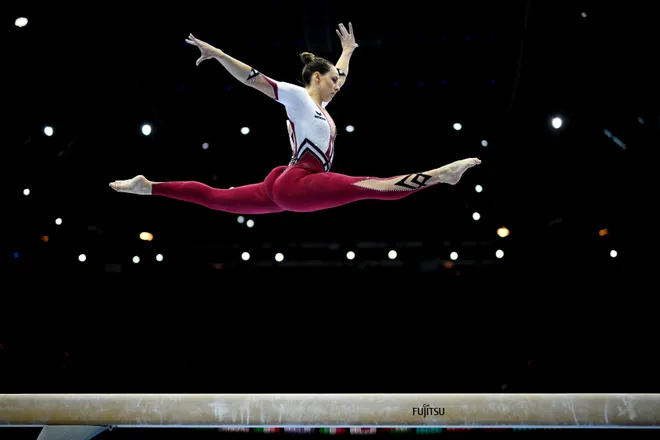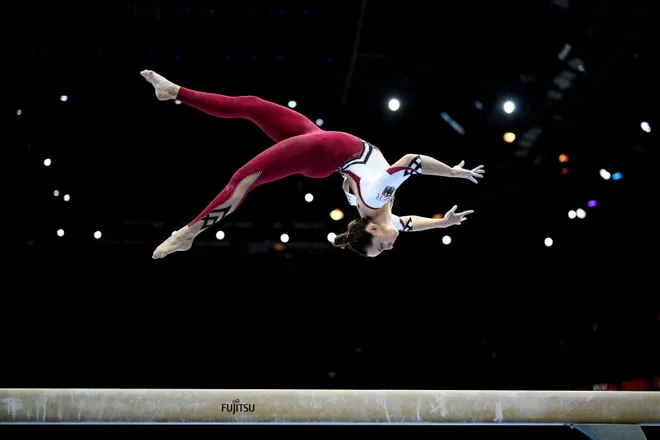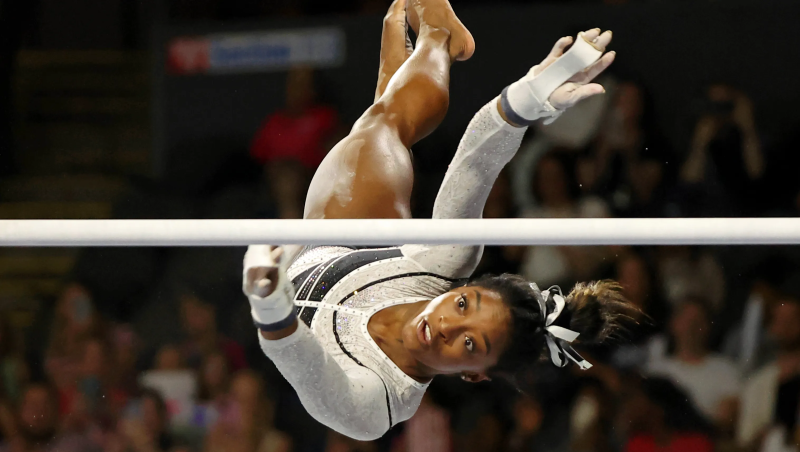How a unitard could help keep women in gymnastics past puberty
ANTWERP, Belgium — The Germans aren’t trying to make a fashion statement with their unitards.
They’re trying to make a statement, period.
"We saw this as an opportunity to feel more comfortable in our body. Also, female empowerment," Sarah Voss, one of the first German gymnasts to wear a unitard, said Monday. She spoke about how all the little girls in gymnastics classes today will one day go through puberty, and that can be a difficult transition to make even without being forced to wear leotards.
"It's in this very vulnerable time they often decide to quit gymnastics because they don't feel very good in their body anymore. Or maybe they feel punished to wear a certain leotard they don't feel very well in," she said. "It’s not only in normal gymnastics classes. It’s also elite gymnastics that we want to feel comfortable in our body and in our performance."

Female gymnasts have been wearing leotards for pretty much forever. They wore shorts — or what your grandmother might have called “bloomers” — when women’s gymnastics made its Olympic debut in 1928. By the 1956 Olympics in Melbourne, however, they were wearing leotards.
It made sense. You cannot flip and twist with reams of fabric billowing around you. Extra fabric could also make it hard for judges to see body lines and leg extensions.
As the technology in fabrics has evolved, leotards have, too. They’re now made of spandex, which helps them stay in place better and keeps them from riding up a gymnast’s thighs or backsides.
But while they might be practical, leotards aren’t necessarily comfortable — as an item of clothing or a means of promoting a healthy body image and self-confidence. They do little to encourage women in conservative cultures to participate in gymnastics, either.
Think about it. Leotards look like a one-piece swimsuit. If you can find a woman who has never once felt self-conscious about how she looks in a swimsuit, congratulations! You’ve found a unicorn. Gymnasts, even with their ridiculous level of fitness, are not immune to this insecurity.

Spandex isn’t foolproof, either, and it’s not healthy for anyone to know a wardrobe malfunction is only a back handspring away.
Then there’s the concern about wearing a leotard when you’re having your period or about to get one.
This isn’t unique to gymnastics, by the way. England’s women’s soccer team asked Nike this year to give them a uniform with blue shorts rather than the traditional all-white kit so players wouldn’t worry about wearing white when they were on their periods. Most women’s teams — club and country — quickly followed suit.
“In the past, it really was (a sport for) young women … with very tiny body size, and they (felt) they had to quit at a certain age. We really want to push for having more women, more older women, more women who speak up for themselves to be present in sports,” said Voss, who is 23.
Technically, the International Gymnastics Federation has always allowed unitards. They’re often seen in both rhythmic gymnasts and acrobatics. But Marina Nekrasova of Azerbaijan is believed to be the first artistic gymnast to wear one, at the Baku World Cup in 2019.
Two years later, Voss and two of her teammates, Kim Bui and Elisabeth Seitz, wore them at the European championships. The entire German team has been wearing them ever since. The ones Monday were maroon from mid-torso to ankle, with cutouts and beading on the legs.
“It’s a very comfortable design. You don’t feel your leotard is in your butt,” Voss said. “And you don’t have to worry at certain times that maybe in a split you could see something. Or that photographers have pictures from (unflattering) angles.”
Voss said other gymnasts have asked the Germans about their unitards, and she hopes companies will begin mass-producing them as they do leotards. The Germans aren’t trying to rid the sport of leotards, but Voss said she hopes gymnasts — of all levels — will see their unitards and know they have options. That a piece of fabric doesn’t have to drive someone out of the sport.
Mostly, they want female athletes, young and old, to know they have a voice. Voss pointed to Simone Biles, who withdrew from all but one final at the Tokyo Olympics after rising anxiety brought on a case of “the twisties,” causing her to lose her sense of where she was in the air.
“She spoke up for herself at a really vulnerable time,” Voss said. “It’s really making me happy that more women are speaking up. Tell the world what (you) really need and don’t be ashamed of it.”
A little extra fabric might not seem like much. For some female gymnasts, however, it could make all the difference.
Follow USA TODAY Sports columnist Nancy Armour on social media @nrarmour.

Disclaimer: The copyright of this article belongs to the original author. Reposting this article is solely for the purpose of information dissemination and does not constitute any investment advice. If there is any infringement, please contact us immediately. We will make corrections or deletions as necessary. Thank you.







